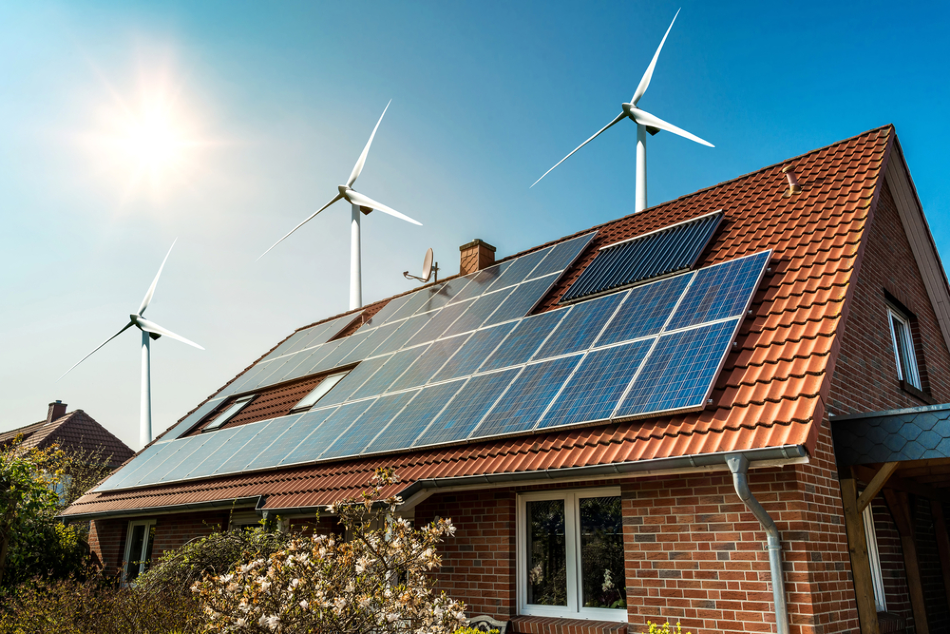Jan 18 2008
Article updated on 04/03/20 by Brett Smith

Image Credit: Diyana Dimitrova/Shutterstock.com
Solar energy is slowly becoming a bigger part of energy production around the world; however, solar power technology hasn't reached the point of efficiency to make it a dominant form of energy production.
One of the more promising types of research into boosting solar power efficiency involves the incorporation of nanocomposite materials. These materials combine microscopic or macroscopic systems with systems that function on the molecular or atomic level.
Hybrid Nanomaterials Showing Promise
One particularly promising area of solar energy research involves the creation of hybrid nanomaterials. These are materials that combine organic and inorganic components, with the inorganic components typically being nanomaterials.
In theory, devices based on these hybrid materials will produce a higher power conversion efficiency. Advocates say these materials blend the beneficial qualities of both types of material, allowing for the creation of light, flexible and cost-effective photovoltaic devices.
In these hybrid systems, charge production is essentially dictated by the energy-level alignment at electron donor/acceptor interfaces, while the photocurrent in a device using these materials would be reliant upon the energy level alignment at the electrode connections.
Consequently, it is fundamental to have the optimal set up by correctly selecting both hybrid combinations and device electrodes. So far, the most promising hybrid materials have nanocomposites materials, including nanoscale particles, rods, sheets or networks.
A continual network of nano components has been shown to significantly lower the push for charge carriers to jump between nanoparticles during transportation to the electrode. Nanorod-based hybrids have exhibited greater overall performances in studies.
The interfacial region and connection between inorganic and organic materials have also been linked to charge separation efficiency. Nanotube systems have shown significant promise in this regard due to a large surface area. Concurrently, porous 3D systems have performed below expectations in studies, probably as a result of the distance between inorganic-organic interfaces and good contacts.
Combining Bacterial Protein and Quantum Dots
According to a study published in July 2019, a team of Russian researchers has developed a promising photovoltaic nanocomposite material that is made from a bacterial protein and quantum dots, which are tiny nanocrystals that strongly absorb visible light.
Some photosynthetic unicellular organisms are capable of converting light energy into chemical energy through the use of a protein called bacteriorhodopsin. The protein facilitates this transfer of energy by allowing a positive charge to pass through the cell membrane. Bacteriorhodopsin functions as a protein pump, and this ability makes it particularly attractive to energy researchers.
Bacteriorhodopsin is similar in function to chlorophyll. However, bacteriorhodopsin can function in anaerobic conditions, and organisms that use this protein can survive in very hostile environments, such as the bottom of the Dead Sea. For researchers, this means the protein is highly stable.
According to the report, the study team was able to expand on the natural capabilities of bacteriorhodopsin by linking it to quantum dots. The novel photovoltaic system created by the researchers was found to be extremely efficient and able to produce an electrical current under low-light conditions that would not produce the current in standard solar cells. The researchers said their system was able to take advantage of the very broad spectrum of light energy absorption afforded by quantum dots.
The Russian research team said the hybrid complexes they created showed a very high efficiency of energy transfer from the quantum dots to the bacteriorhodopsin protein. They added that their results indicate a strong potential for the development of a very effective photocell.
Incidentally, bacteriorhodopsin changes color billions of times a second when it is pumping protons. This phenomenon suggests the protein has significant promise for display and image technology.
The study team said their current work is focused on optimizing their system to create a useful photocell.
Increasing Durability with Nanocomposites
In addition to enhancing the efficiency of solar cells, nanocomposites are also being investigated with respect to making photovoltaic systems more durable.
In a 2017 press release, Texas A&M scientists discussed their effort to make solar cells more durable by getting rid of corrosion, arc faults, and leakages of electricity that can occur due to corrosion.
According to the press release, clay-based nanocomposite coatings being developed at Texas A&M can significantly increase both the lifetime and durability of photovoltaic cells by inhibiting corrosion. The researchers behind the effort said their goal is to reduce the long-term costs of solar technology, and their use of inexpensive clay to reduce corrosion is essential to that effort.
References and Further Reading